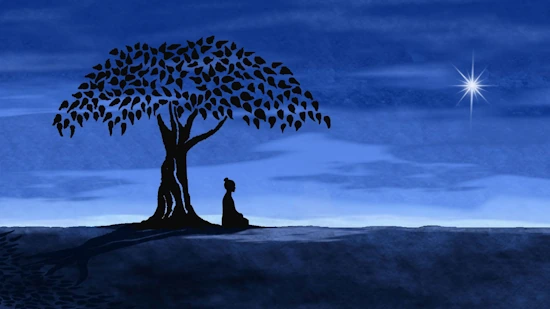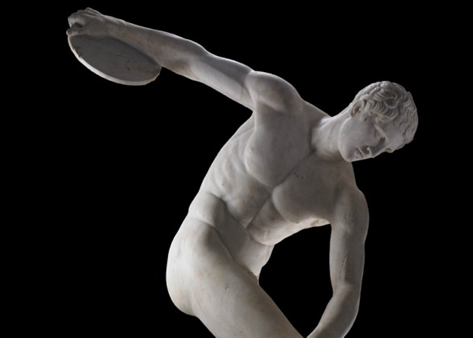Since the dawn of civilization, humanity has been fascinated by the enigmatic allure of beauty, a transcendent force that transcends the limitations of physical appearance. Beauty is capable of evoking intense emotions, prompting contemplation, and establishing a sacred connection with the metaphysical realm. This article examines the philosophical and spiritual dimensions of beauty, tracing its evolution from ancient times to the present day and exploring its intrinsic correlation with truth and virtue.

The Primordial Allure: Beauty’s Spiritual Origins
In the dawn of human civilization, beauty was inextricably intertwined with spirituality and the divine. Ancient cultures revered beauty as a manifestation of the sacred, a reflection of the Creator’s infinite splendor. From the awe-inspiring grandeur of nature to the intricate artistry of sacred spaces, beauty served as a conduit for spiritual transcendence, inspiring reverence and igniting the human soul’s innate longing for the sublime.
The ancient Greeks, for instance, perceived beauty as a reflection of the divine, a tangible embodiment of goodness and virtue. Plato, the renowned philosopher, believed that physical beauty mirrored the soul’s purity, while Aristotle posited that beauty was the splendor of truth itself. This profound connection between beauty and spirituality permeated various religious and philosophical traditions, shaping humanity’s collective consciousness and reverence for the aesthetic.
In addition, ancient Greek thinkers held the conviction that pleasantness was an unchanging and universal truth, which they defined as Hyperuranium. According to Plato, Hyperuranium was the world of ideas that lay beyond the vault of heaven, representing the last bastion of the physical world, a veritable portal to the metaphysical and transcendental dimensions. In the Hyperuranium, ideas were considered to be perfect, akin to beauty and truth, and not mere copies, as were their material representations. representations.
The Renaissance: Beauty’s Humanistic Reawakening
As the Renaissance commenced, a profound transformation occurred in the perception of beauty. The humanistic movement, which was fuelled by a resurgence of classical ideals, celebrated the human form and the individual’s capacity for creativity and self-expression. Artists such as Leonardo da Vinci, Michelangelo, and Raphael were instrumental in ushering in this new era, with their masterpieces exemplifying the harmonious fusion of physical beauty and spiritual transcendence.
While the Renaissance marked a departure from the purely religious interpretation of beauty, it did not sever its connection to the metaphysical realm. Instead, it ushered in a new understanding of beauty as a reflection of the human spirit, a manifestation of the divine spark within each individual. This humanistic perspective elevated art and aesthetics to a realm of spiritual expression, thereby enabling artists to delve deeply into the human condition and reveal the sublime through their creations.
The Enlightenment: Reason and the Pursuit of Objective Beauty
The Age of Enlightenment ushered in a paradigm shift, as reason and empiricism took precedence over traditional spiritual and religious dogmas. Philosophers like Immanuel Kant sought to define beauty through objective criteria, asserting that it was a universal quality that could be appreciated by all rational beings. This pursuit of objective beauty, while rooted in reason, did not entirely sever its connection to the metaphysical realm.
Kant believed that beauty was a symbol of morality, a reflection of the harmonious interplay between the physical and the transcendent. He posited that the appreciation of beauty was a gateway to understanding the sublime, an experience that transcended the material world and touched upon the realm of the infinite and the divine.
The Romantic Era: Beauty as a Conduit to the Transcendent
As the Romantic movement gained momentum, a renewed emphasis was placed on the emotional and spiritual dimensions of beauty. Poets, artists, and philosophers alike celebrated the sublime power of nature, perceiving it as a manifestation of the divine and a conduit to the transcendent. The works of Wordsworth, Shelley, and Keats were imbued with a reverence for the beauty of the natural world, elevating it to a spiritual plane and inviting contemplation of the metaphysical mysteries that lie beyond the veil of the material.
This Romantic perspective echoed the ancient belief that beauty was a reflection of the divine, a gateway to the ineffable realms of the soul. The appreciation of beauty became a means of transcending the limitations of the physical world, enabling individuals to connect with the eternal and the infinite through the passionate experiences evoked by art, poetry, and the sublime wonders of nature.
The Modern Era: Beauty’s Contested Terrain
As modernity dawned, the concept of beauty underwent a profound transformation, often becoming a contested and subjective terrain. The rise of nihilism, hedonism, and agnosticism challenged traditional notions of beauty, leading to a proliferation of artistic movements that embraced the unconventional, the abstract, and the avant-garde.
The “cult of ugliness” emerged, rejecting classical ideals of beauty and embracing relative and subjective interpretations. Modern art, in particular, became a battleground for redefining beauty, with artists like Pablo Picasso and Barnett Newman challenging conventional aesthetics and embracing the dissonant and the provocative.

Despite this apparent departure from traditional conceptions of beauty, the metaphysical underpinnings of aesthetics persisted. Artists and philosophers alike grappled with the existential questions that beauty posed, exploring the relationship between the physical and the transcendent, the material and the spiritual.
From the “cult of ugliness” to decay
In modern society we increasingly observe a certain amount of decay. When visiting certain cities it is common to see walls of houses covered with graffiti. It almost seems that people no longer pursue beauty and instead prefer decay in the environment around them. Sometimes there are incidents of soiling ancient and important works of art, which are emblems and witnesses of a glorious past, as if human beings not only can no longer create something beautiful, but also want to destroy a symbol of splendor.
Given such behavior, one would think that magnificence is no longer sought after today, but this is not the case. As much as degradation seems to be rampant at the community level, glamour is maniacally pursued at the individual level. What we learn daily through experience is that beauty, in today’s society, matters a great deal. Those who most faithfully represent the aesthetic standards imposed by the community undoubtedly have an easier time than those who are a little less attractive, especially in being able to make connections and build relationships. In the workplace, “good looking” is often required, and during an interview, physical appearance turns out to be very important.
Fashion determining beauty
The fashion industry also provides what are now models for inspiration, what is beautiful and desirable or ugly and to be avoided. Fashions are changeable, shifting from year to year, fostering a disposable culture. People who follow trends are chameleon-like, adapting to the needs of the moment, as if they were unable to develop their own taste and personality. In reality, theirs is just a need to feel accepted and judged positively by others.
This need for acceptance is especially present in women and now in many men as well; these individuals are victims of clichés and are obsessed with appearing beautiful and perfect. They imitate the examples that TV and entertainment offer them without even questioning them, not realizing that in doing so they instrumentalize their bodies, turning them into mere objects. Those who agree to show themselves like this or to work in show business in this way not only feed the vicious circle of objectification of the person, but also show that they lack ethics, that they are willing to accept anything for money, as well as that they are vain. Vanity is a clear symptom of an individual’s emptiness and inner ugliness, as it values only what is seen externally. Instead, one should remember that beauty is not what appears, but rather the inner essence.

Inner beauty
True beauty is to be found within oneself and not outside. If we are unable to appreciate the beautiful and good within ourselves, we are unable to understand the inner magnificence of others or discover their peculiarities. What we see on the outside in an individual is only a small part of their inner reworking, of what they want to show about themselves. An extroverted individual may present a self-confident and possibly untruthful image, whereas an introverted person may tend to conceal their inner thoughts and feelings, although these may be of interest. It is important to learn to analyse people in order to understand who we are looking at and to avoid being misled by their attempts to appear as they are not. Beauty is represented by the true essence of a person and not the imaginary one; what is true is also beautiful, at least because of its purity.
The search for beauty
In this sense, beauty becomes a channel of access to truth, a means of understanding and appreciating the mysteries that lie beyond the material world. The experience of beauty, whether through art, nature or the contemplation of ideas, can serve as a catalyst for spiritual awakening, inspiring individuals to seek the most profound truths that resonate in the depths of their souls. The search for beauty thus coincides with the search for truth, which everyone possesses, albeit unconsciously, within himself or herself. The search for beauty is therefore an introspective journey.
The Correlation Between Beauty and Truth
Throughout the ages, philosophers and thinkers have grappled with the intrinsic relationship between beauty and truth. From Plato’s assertion that beauty is the splendor of truth to Keats’s famous proclamation that “Beauty is truth, truth beauty,” the interplay between these two concepts has been a subject of enduring fascination and contemplation.
At the heart of this correlation lies the belief that true beauty is not merely skin-deep but rather a reflection of deeper, more profound truths. Beauty, in its purest form, is perceived as a manifestation of the harmonious interplay between the physical and the metaphysical, the material and the spiritual. It is a reflection of the underlying order, symmetry, and perfection that permeate the cosmos, a tangible expression of the universal laws that govern existence.
In this sense, beauty becomes a conduit to truth, a means of apprehending and appreciating the profound mysteries that lie beyond the veil of the material world. The experience of beauty, whether through art, nature, or the contemplation of profound ideas, can serve as a catalyst for spiritual awakening, inspiring individuals to seek the deeper truths that resonate within the depths of their souls.
The Resurgence of Spiritual Aesthetics
In the contemporary era, so full of contradictions, on the one hand there is an inexorable moral and aesthetic decay of society, while on the other there seems to be a reborn interest in spiritual aesthetics, driven by a growing recognition of the interconnectedness of beauty, truth and the metaphysical realm. Philosophers and artists seek to revive the ancient conception of beauty as a manifestation of the divine, a gateway to transcendence and a mirror of the soul’s innate desire for the sublime.
This resurgence has manifested in various forms, from the revival of sacred art and architecture to the exploration of contemplative practices that cultivate an appreciation for the beauty inherent in the present moment. Contemporary artists have embraced the notion of beauty as a means of spiritual expression, seeking to evoke profound experiences and facilitate a deeper connection with the ineffable mysteries of existence.

Beauty as a Reflection of the Divine
A considerable number of spiritual traditions and philosophies have espoused the view that beauty is a reflection of the divine, a tangible manifestation of the Creator’s infinite splendor. In Islam, the concept of beauty is inextricably linked with the belief in the perfection and majesty of God. The Quran extols the beauty of creation, encouraging believers to contemplate the wonders of nature as a means of recognizing the divine artistry and wisdom that permeate the universe.
Similarly, in Hinduism, the concept of beauty is deeply rooted in the belief in the interconnectedness of all things. The divine is perceived as the ultimate source of beauty and harmony. The intricate artistry of Hindu temples and the vibrant colors and patterns that adorn them are not merely aesthetic expressions; rather, they are profound reflections of the divine essence that permeates all of creation.
These spiritual traditions remind us that beauty is not merely a superficial quality; rather, it is a profound manifestation of the sacred, a tangible expression of the divine essence that resides within all things. The cultivation of an appreciation for beauty can facilitate a deeper connection to the metaphysical realm and a greater understanding of the profound mysteries that lie at the heart of existence.
Beauty as a Gateway to Self-Realization
Beyond its connection to the divine, beauty has also been recognized as a powerful catalyst for self-realization and personal transformation. The appreciation of beauty, whether through art, nature, or the contemplation of profound ideas, can serve as a means of transcending the limitations of the ego and connecting with the deeper layers of one’s being.
In many spiritual traditions, the pursuit of beauty is seen as a path to self-knowledge and self-transcendence. The cultivation of an appreciation for the beauty inherent in the present moment enables individuals to learn to let go of the attachments and preconceptions that obscure their true nature, thereby allowing them to experience a state of profound presence and inner peace.
The contemplation of beauty can also be employed as a means of cultivating virtues such as humility, gratitude, and reverence, which are essential for spiritual growth and self-realization. By recognizing the beauty that exists beyond the confines of the self, individuals can develop a deeper sense of interconnectedness with the world around them. This fosters a sense of unity and compassion that transcends the boundaries of the individual ego.
Beauty as a Catalyst for Social Transformation
In addition to its spiritual and personal dimensions, beauty has also been identified as a significant force for social transformation and the cultivation of a more harmonious and just society. Throughout history, art and aesthetics have played a pivotal role in challenging social norms, inspiring critical thinking, and fostering a deeper appreciation for the inherent dignity and worth of all human beings.
The capacity of beauty to transcend boundaries and speak to the universal human experience represents its most significant strength. Art, in particular, has the capacity to evoke profound emotions, challenge preconceptions, and inspire individuals to perceive the world from new perspectives. By exposing the beauty inherent in diverse cultures, traditions, and perspectives, art can serve as a catalyst for fostering greater understanding, empathy, and respect among different communities.
Moreover, the appreciation of beauty can serve as a unifying force, transcending the divisions of race, class, and ideology. By recognizing the shared human experience of awe and wonder in the face of beauty, individuals can cultivate a sense of common ground and shared humanity, laying the foundation for a more just and compassionate society.
Beauty in the Face of Adversity: Resilience and Transcendence
In times of adversity and suffering, the pursuit of beauty can serve as a powerful source of resilience and transcendence. Throughout history, individuals and communities have turned to art, music, and the appreciation of nature as a means of finding solace, hope, and meaning in the midst of challenging circumstances.
The creation and appreciation of beauty can serve as a profound act of resistance against the forces of oppression, injustice, and despair. By cultivating an appreciation for the beauty that exists even in the darkest of moments, individuals can tap into a wellspring of strength and resilience that transcends the limitations of their circumstances.
Moreover, the pursuit of beauty can serve as a means of preserving cultural identity and fostering a sense of community in the face of adversity. Through the creation of art, music, and literature, individuals and communities can celebrate their unique traditions, histories, and perspectives, ensuring that their stories and experiences are not forgotten in the face of adversity.
Beauty and the Pursuit of Virtue
Throughout the ages, philosophers and spiritual traditions have recognized the intrinsic connection between beauty and virtue. The appreciation of beauty has been seen as a means of cultivating virtues such as compassion, empathy, and a deeper understanding of the interconnectedness of all things.
In ancient Greek philosophy, for instance, the concept of “kalokagathia” encapsulated the belief that beauty and goodness were inextricably linked. The pursuit of beauty was seen as a means of cultivating virtue and living a life of moral excellence, as the appreciation of beauty was believed to inspire individuals to strive for higher ideals and a more harmonious existence.

Similarly, in many spiritual traditions, the cultivation of beauty is seen as a means of fostering virtues such as humility, gratitude, and reverence. By recognizing the beauty inherent in the world around us, individuals can develop a deeper sense of awe and wonder, cultivating a sense of humility in the face of the profound mysteries of existence.
Moreover, the appreciation of beauty can serve as a means of fostering empathy and compassion, as it encourages individuals to transcend the boundaries of the self and recognize the inherent worth and dignity of all beings. By cultivating an appreciation for the beauty inherent in diverse cultures, traditions, and perspectives, individuals can develop a deeper understanding of the shared human experience, fostering a sense of unity and interconnectedness that transcends the divisions of race, class, and ideology.
Beauty and the Pursuit of Peace
In a world often marked by conflict, division, and turmoil, the pursuit of beauty can serve as a powerful force for cultivating peace and harmony. The appreciation of beauty has the capacity to transcend boundaries and speak to the universal human experience, fostering a sense of shared humanity and common ground among diverse individuals and communities.
Art, in particular, has the power to evoke profound emotions and inspire individuals to see the world from new perspectives. By exposing the beauty inherent in diverse cultures, traditions, and perspectives, art can serve as a catalyst for fostering greater understanding, empathy, and respect among different communities, laying the foundation for a more peaceful and harmonious coexistence.
Moreover, the cultivation of beauty can serve as a means of fostering inner peace and tranquility. The cultivation of an appreciation for the beauty inherent in the present moment enables individuals to learn to let go of the attachments and preoccupations that fuel inner turmoil, thereby allowing them to experience a state of profound presence and inner calm.
In this sense, the pursuit of beauty is not merely an aesthetic endeavor but rather a profound act of peacemaking, one that has the potential to transform individuals, communities, and societies, fostering a deeper sense of interconnectedness, compassion, and harmony among all beings.
Conclusion
The pursuit of beauty is an intrinsic and pervasive aspect of the human experience, transcending temporal, cultural, and traditional boundaries. From the reverence for beauty as a manifestation of the divine in ancient civilizations to the exploration of subjective and avant-garde aesthetics in the modern era, the concept of magnificence has remained a constant source of contemplation.
The appreciation of beauty is not merely an aesthetic endeavor; it is also a means of connecting with the ineffable mysteries of existence. It has the capacity to inspire transcendence, facilitate self-realization, cultivate virtues such as compassion and empathy, and facilitate a deeper comprehension of the interconnectedness of all elements within the cosmic realm.
Do you have a sensitivity toward beauty? Do you also feel that there is truth in the purest beauty? Then you possess a predisposition toward spirituality and transcendence, and you will surely find interesting our introspectively oriented personality tests. Try them right now.
TAKE THE AWAKENING TEST
TAKE THE AWARENESS TEST
TAKE THE GREAT PERSONALITY TEST
MINI SELF-ADMINISTERED TEST: ARE YOU SENSITIVE TO BEAUTY?
Read the sentences below and select the ones you agree with and that you think make the most sense.
Count the number of boxes checked and read the corresponding profile.
0: You recognize and appreciate true beauty
1-2: You are fairly sensitive to true beauty
3-4: You confuse beautiful with desirable
5-6: You can’t discern true beauty
MINI SELF-ASSESSMENT TEST: ARE YOU A FRIVOLOUS/SUPERFICIAL PERSON?
Read the sentences below and select the ones you agree with and that you think make the most sense.
Count the number of boxes checked and read the corresponding profile.
0: You are not superficial at all
1-2: You are frivolous from time to time
3-4: You tend to be superficial
5-6: You are very frivolous and superficial
